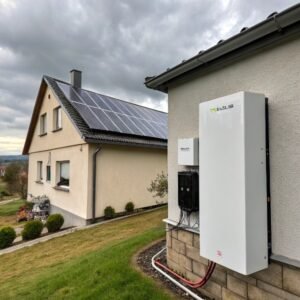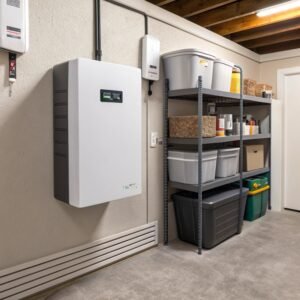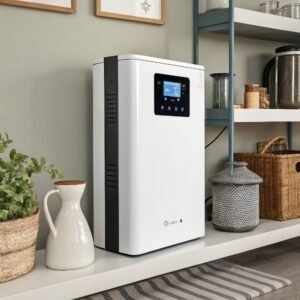What is a liquid-cooled energy storage system? What are its advantages over air-cooled systems?
by
What is a liquid-cooled energy storage system? What are its advantages over air-cooled systems?
Energy storage systems are evolving rapidly, and cooling technology makes all the difference. Liquid cooling is changing the game for battery performance and longevity.
A liquid-cooled energy storage system uses coolant fluid to regulate battery temperature, offering 30-50% better cooling efficiency than air systems. Key advantages include compact design, uniform temperature control, and 20-30% longer battery life.
Transition Paragraph:
Now that we understand the basic concept, let's explore why liquid cooling is becoming the preferred choice for outdoor energy storage.
Why should outdoor energy storage cabinets be liquid-cooled instead of air-cooled?
Outdoor conditions present unique challenges for battery systems. Temperature extremes can make or break your energy storage investment.
Outdoor cabinets benefit from liquid cooling because it maintains stable temperatures in harsh weather, prevents thermal runaway, and allows higher energy density in compact spaces - crucial for installations with space constraints.
Outdoor Performance Comparison
| Factor | Air-Cooled | Liquid-Cooled |
|---|---|---|
| Temperature Range | -10°C to 45°C | -30°C to 60°C |
| Cooling Efficiency | 40-60% | 80-95% |
| Space Requirements | Larger footprint | Compact design |
| Dust/Water Protection | Limited | IP65+ possible |
| Maintenance Needs | Frequent filter changes | Minimal upkeep |
Key outdoor advantages:
- Handles extreme temperatures better
- More resistant to environmental contaminants
- Enables higher power density
- Reduces temperature fluctuations
- Lower noise pollution
How does a liquid-cooled system control battery temperature? How does it work?
Precision temperature control is the secret sauce of liquid cooling systems. The engineering behind it is both simple and sophisticated.
Liquid cooling works by circulating coolant through channels around battery cells, absorbing heat to a heat exchanger. A control system adjusts flow rates based on real-time temperature sensors, maintaining optimal 20-35°C operating range.
Liquid Cooling System Components
- Coolant Fluid: Typically water-glycol mixture
- Cold Plates: Metal plates with microchannels
- Pump: Circulates coolant through system
- Heat Exchanger: Transfers heat to external environment
- Control Unit: Monitors and adjusts cooling parameters
- Temperature Sensors: Provide real-time cell data
Operation sequence:
- Batteries generate heat during operation
- Sensors detect temperature changes
- Control unit activates pump
- Coolant absorbs heat from cells
- Warm coolant flows to heat exchanger
- Heat dissipates to external environment
- Cooled coolant recirculates
Does a liquid-cooled system increase maintenance costs or complexity?
Many assume liquid systems are high-maintenance, but modern designs have changed the equation significantly.
While liquid cooling adds initial complexity, it reduces long-term maintenance by eliminating filters and fans. Modern sealed systems require only annual coolant checks, often proving more reliable than air systems over time.
Maintenance Comparison
| Task | Air-Cooled | Liquid-Cooled |
|---|---|---|
| Filter Replacement | Quarterly | Not needed |
| Fan Maintenance | Biannual | Not needed |
| Coolant Service | N/A | Every 2-3 years |
| System Inspection | Monthly | Quarterly |
| Component Lifespan | 3-5 years | 5-8 years |
Maintenance advantages:
- No moving parts to wear out
- Sealed system prevents contamination
- Automated monitoring reduces checks
- Longer service intervals
- Lower replacement part costs
Conclusion
Liquid-cooled energy storage offers superior temperature control, space efficiency, and longevity compared to air-cooled systems, making it ideal for demanding outdoor applications despite slightly higher initial costs.



